Categories
A streamlined NGO approach to drought-induced food insecurity in Zimbabwe: voices from EAP custodians and stakeholders
In early 2020, Welthungerhilfe began to roll out its forecast-based action (FbA) mechanism to tackle drought-induced food insecurity in Zimbabwe, under a multi-country programme to establish a participatory, localized anticipatory action approach for this hazard. This included developing Early Action Protocols (EAPs) and, during this process, Welthungerhilfe cooperated with Action Against Hunger and Trócaire to cover the various drought-prone regions of the country. A nationwide risk analysis helped to prioritize three regions based on their historical susceptibility to drought: Chimanimani, Chivi and Matobo.
Figure 1. Prioritized drought districts in Zimbabwe and the EAP custodians responsible
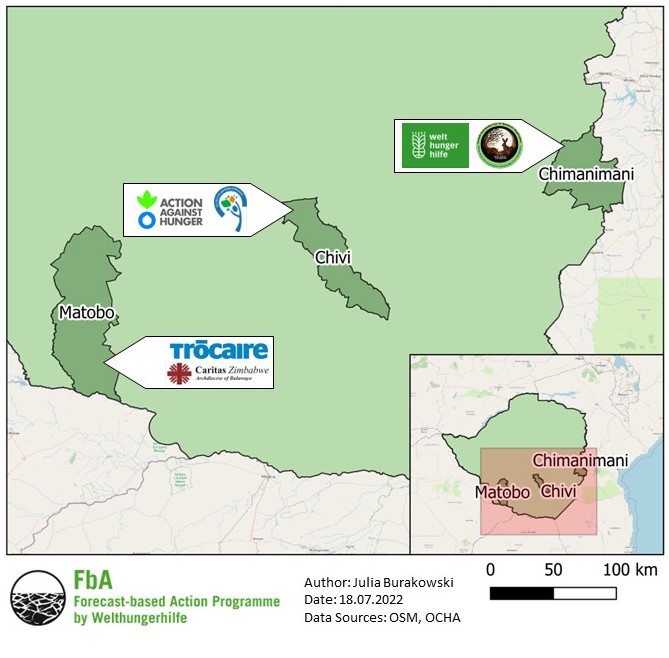
Acting as EAP ‘custodians’, Welthungerhilfe, Action Against Hunger and Trócaire partnered with national organizations to ensure a localized approach. These three further EAP custodians were identified through a competitive tendering progress, held among the Start Network’s member organizations. Welthungerhilfe and the TSURO Trust took responsibility for EAP development in Chimanimani; Action Against Hunger and Nutrition Action Zimbabwe for Chivi; and Trócaire and Caritas Bulawayo for Matobo.
During the EAP development process, all custodians engaged with actors at all levels: community members, community committees, and local and national governments and agencies. Research and consultations were conducted to select suitable early actions for each region. For example, communities were consulted on the impacts of past drought, their anticipated needs and potential risk factors. This was done through a range of participatory methods, including key informant interviews, focus group discussions, community visits, consultations and stakeholder workshops. All three EAP custodians followed the three steps in Welthungerhilfe’s manual, ‘Early Action Identification and EAP Development - Step-By-Step Guidance’, which are outlined below. This helped to ensure a streamlined approach and created opportunities for the custodians to exchange ideas and learn from each other.
Community consultations in Ward 8, Chimanimani, to rank and prioritize households.
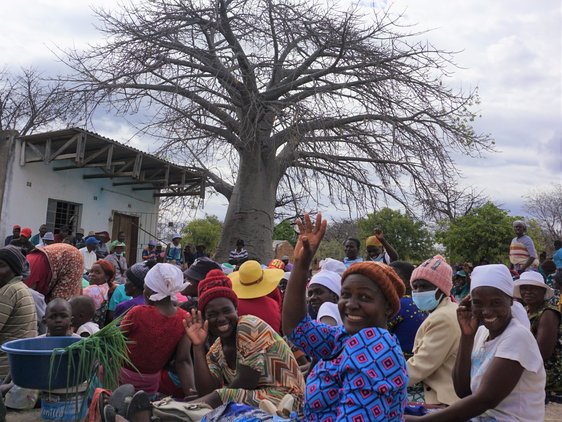
Community consultations in Ward 8, Chimanimani, to rank and prioritize households. © Welthungerhilfe
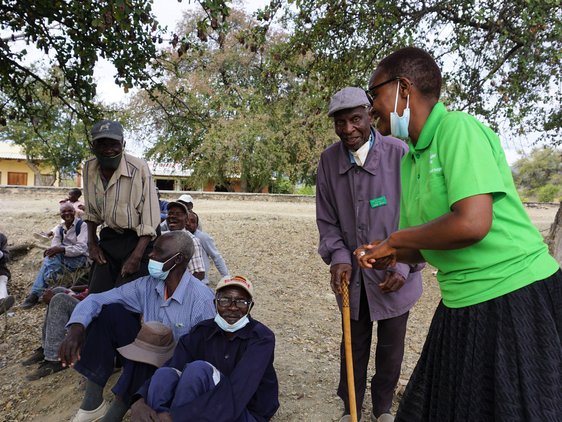
Community consultations in Ward 8, Chimanimani, to rank and prioritize households. © Welthungerhilfe

Community consultations in Ward 8, Chimanimani, to rank and prioritize households. © Welthungerhilfe
Community consultations in Ward 8, Chimanimani, to rank and prioritize households. © Welthungerhilfe
We want to give also other NGOs the chance to take an active role in the setting up of an FbA project, gaining familiarity with FbA systems and, if the system triggers, to be in a position to receive funds to carry out activities within drought-affected provinces in Zimbabwe.
FbA is critical [in Chivi] in curbing possible eventualities, which are lethal and life-threatening [and] likely to cause human/livestock losses, because it's a proactive approach informed by prediction of the effects of civic occurrences, [such as] drought. Resultantly, FbA is critical in progressive planning as a district.
With climate change effects negatively impacting rural livelihoods, FbA offers a paradigm shift from traditional humanitarian response, as it is anticipatory and allows for timely interventions before a disaster strikes.
The FbA project introduced a new dimension to humanitarian assistance, where the intended beneficiaries are at the centre of the crafting of possible responses, through a bottom-up approach.
Early action identification and EAP development: step-by-step guidance
Work plan activities: inception meeting, stakeholder workshops, community awareness meetings
Step 1 creates a stable foundation for a highly participatory and localized process, before the identification of early actions, and the development of an EAP, takes place. It does this by answering the following questions:
- What is the basic idea behind FbA?
- How is Welthungerhilfe’s programme structured?
- What are the main tasks and responsibilities of EAP custodians?
- How will stakeholders and communities be involved?
- What are stakeholders’ and communities’ expectations towards the project – for EAP custodians and/or Welthungerhilfe?
Work plan activities: stakeholder workshops, community consultation meetings, key informant interviews, scenario-planning workshops
Step 2 answers the following key questions:
- What are the main impacts caused by the hazard in question?
- Which harmful impacts can FbA reduce?
- Which early actions will best reduce these impacts?
- Which of these early actions are currently feasible given the existing context and capacities?
Work plan activities: community feedback meetings, development of detailed EAPs, EAP validation workshops
Step 3 answers the following key questions:
- Who will do what, and when?
- Does the EAP reflect the reality?
- How can an EAP be operationalized? Are we ready to implement the EAP?
A learning event in Chivi District, Zimbabwe
On 21 July 2022, EAP custodians held a learning event in Masvingo, Zimbabwe, hosted by Nutrition Action Zimbabwe and Action Against Hunger. They shared experiences and successes in the development of early actions for drought, evaluated the challenges faced and overcome, and shared the lessons learned and key recommendations to further strengthen future programmes. Partners and stakeholders also took the opportunity to share their own experiences of this FbA initiative.
The participants acknowledged that the standardization of the EAP development process in all three districts was beneficial for cooperation, joint implementation and learning. Additionally, they applauded the uniqueness of this approach, which is bottom-up rather than top-down, with a focus on involving all stakeholders and affected communities throughout the development steps. Involving communities so closely in the identification of early actions also had positive side effects: communities not only identified feasible activities for the EAP custodians in anticipation of drought to be financed through funding, but also actions that could be implemented by communities without external funding.
EAP custodians present evaluations of methods, challenges and lessons learned during the EAP development process, at the learning event in Masvingo
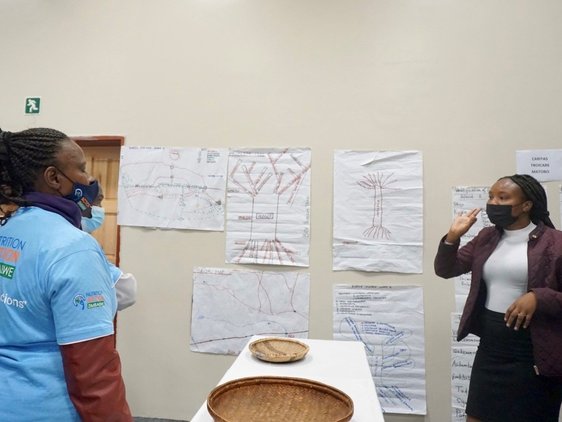
EAP custodians present evaluations of methods, challenges and lessons learned during the EAP development process, at the learning event in Masvingo. © Welthungerhilfe
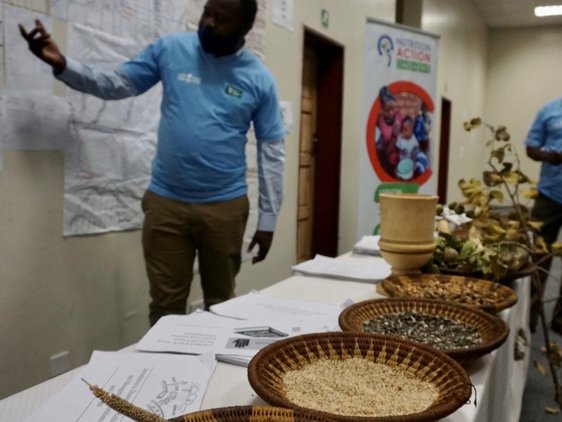
EAP custodians present evaluations of methods, challenges and lessons learned during the EAP development process, at the learning event in Masvingo. © Welthungerhilfe
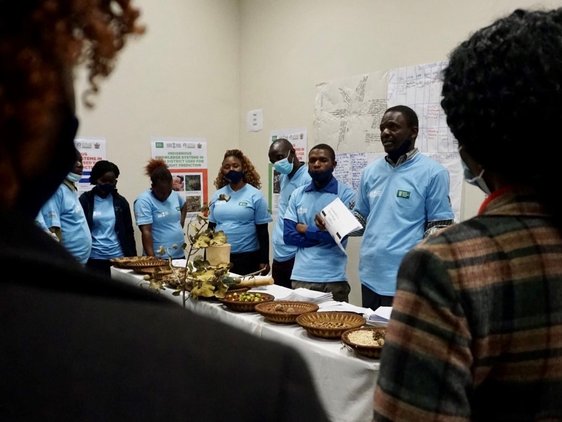
EAP custodians present evaluations of methods, challenges and lessons learned during the EAP development process, at the learning event in Masvingo. © Welthungerhilfe
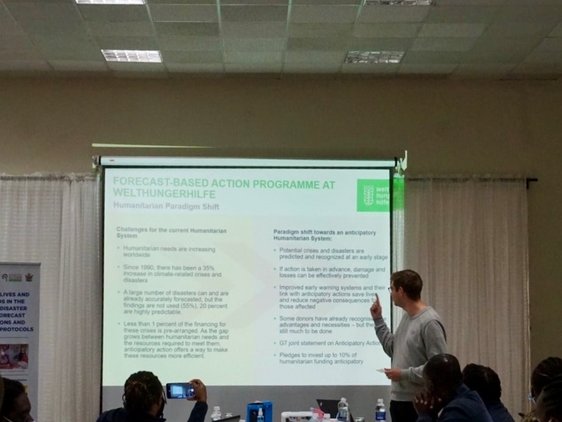
EAP custodians present evaluations of methods, challenges and lessons learned during the EAP development process, at the learning event in Masvingo. © Welthungerhilfe

EAP custodians present evaluations of methods, challenges and lessons learned during the EAP development process, at the learning event in Masvingo. © Welthungerhilfe
EAP custodians present evaluations of methods, challenges and lessons learned during the EAP development process, at the learning event in Masvingo. © Welthungerhilfe
EAP custodians present evaluations of methods, challenges and lessons learned during the EAP development process, at the learning event in Masvingo. © Welthungerhilfe
EAP custodians present evaluations of methods, challenges and lessons learned during the EAP development process, at the learning event in Masvingo. © Welthungerhilfe
Key findings from the learning event
During district-specific groupwork at the learning event, the EAP custodians and the stakeholders present from Chivi discussed what went well, areas for improvement, opportunities, best practices, and recommendations for the future. A synopsis of these results is presented here.
What went well
- The streamlined NGO approach brought uniformity to the EAP development process across the three EAP regions.
- There were good working relationships between the EAP custodians, both within and between the EAP regions.
- Stakeholders were engaged and involved throughout.
- There was good compliance with existing structures (e.g., protocols and policies).
- Different groups in society were fully represented, for example women, youths, local leaders, persons with disability, the elderly, disaster risk reduction committees and men.
- The bottom-up approach resulted in a participatory process.
- Using an evidence-based approach led to an effective ranking of wards, and allowed for targeting and addressing each community’s needs.
- Ranking the wards helped the districts to identify those that were the most drought vulnerable.
Areas for improvement
- Increase response funding to cover all vulnerable households.
- Timing of implementation is important: the EAP implementation collided with the first impact of drought, and there is a need to be more proactive in future.
- The timeline for developing the EAP (three months) was tight.
- Longer training sessions would increase capacity building.
Opportunities and best practices
- Use a participatory process that involves stakeholders and communities (e.g., adoption of community-led disaster risk management tools) in the EAP development process.
- Encourage stakeholder and community buy-in and support for this approach.
- Align with and adhere to existing structures (e.g., government protocols, the national cash working group).
- Adopt the approach outlined in Welthungerhilfe’s step-by-step manual.
- Work together through a streamlined approach that enables cross-organizational learning.
Recommendations for the future
- Expand capacity building for FbA (e.g., training sessions).
- Avoid ‘over-researching’ communities: community awareness meetings can be combined with consultative meetings.
- Plan for exchange visits to allow for cross-custodian learning.
- Scale up in terms of ward coverage and budgets.
- Incorporate universities into the research elements.
- There is a need to develop a systematic exit strategy.
- Engage with traditional and indigenous knowledge systems (e.g., potential validations for triggers).
Forecast-based action is all about community intelligence on early response to emergencies. I am happy to realize that our communities are still endowed with local and indigenous knowledge systems, which need to be documented and utilized for near real-time responses.
Through support from Welthungerhilfe, Nutrition Action Zimbabwe and Action Against Hunger managed to successfully implement a pilot forecast-based action project in Chivi District. The project facilitated the development of an Early Action Protocol for Drought and capacitated staff, stakeholders, disaster risk reduction committees and local leaders on anticipatory action. The participants are now able to plan and prepare for a disaster before it occurs.
An ‘objective tree’ was adopted in order to unpack some of the problems noted during the community engagements. It is possible to rephrase each of the problems into a positive desirable. In this way, root causes and consequences are turned into root solutions.
The drought-model trigger and EAP implementation in 2022
In the scope of this FbA initiative in Zimbabwe, the programme’s drought-monitoring tool predicted a deterioration of the climatological and agricultural situation in the coming months. Hence, negative impacts on food security are expected, especially affecting already vulnerable groups. In response, the Start Network released funding for all three pilot regions in Zimbabwe. All three EAP custodians will roll out the actions set out in their EAPs in the coming months. More information on this will follow soon.
All EAP custodians, their stakeholders and communities worked very hard in the past months to finalize all EAPs in time to be trigger-ready this season. Through this joint learning event, we made sure to learn from each other and improve our EAP development process further.
The FbA project came at an appropriate time for the communities to be proactive and have their capacities strengthened in time, building their resilience to future disasters through community-led management processes in Matobo District – thanks to Welthungerhilfe.
Further information
More information on the FbA project, including the triggers used, can be found on the Welthungerhilfe’s Zimbabwe project page: Development of a forecast-based action mechanism addressing drought-induced food insecurity in Zimbabwe.
This blog was written by Julia Burakowski, advisor for FbA, monitoring, evaluation, accountability and learning (MEAL) and communication, Welthungerhilfe. For more information on this work, please get in touch with Dominik Semet, FbA programme coordinator, Welthungerhilfe, or Anastancia Mangisi, FbA project coordinator, Welthungerhilfe Zimbabwe.
